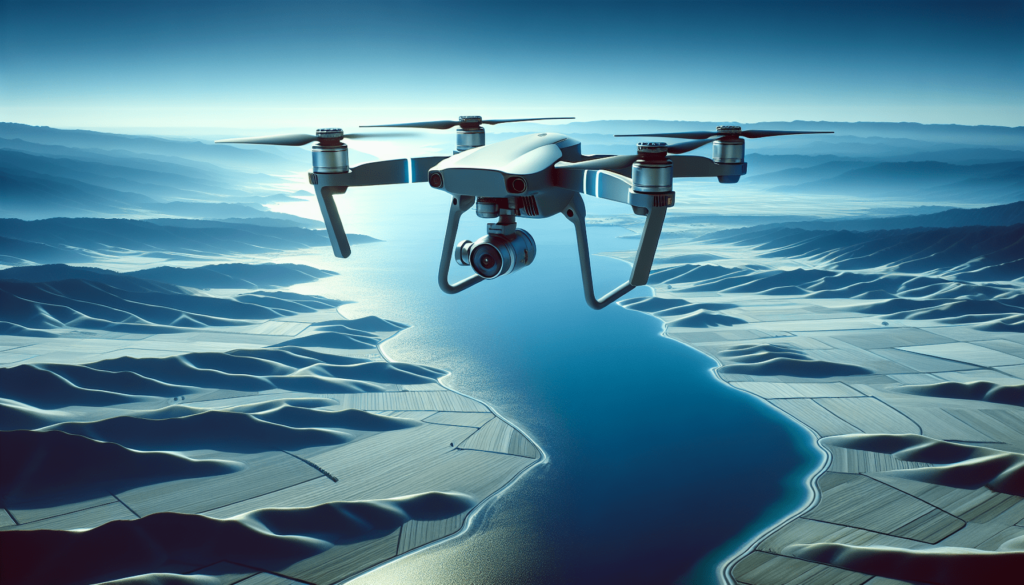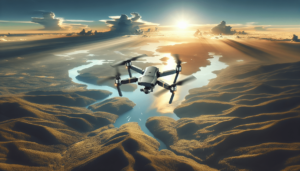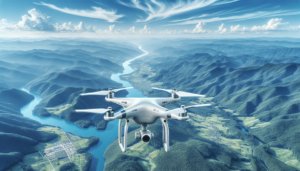Have you ever found yourself gazing up at the sky, watching drones zip around and thought, “Could we see ourselves getting into that?” We sure have. There’s something undeniably fascinating about seeing the world from an entirely new perspective. For those of us who are visual storytellers at heart, the idea of snapping aerial photos with ease is incredibly appealing. But stepping into this world of drones can feel like we’ve suddenly decided to pilot a spaceship—it’s a tad overwhelming. So, let’s chat about how we can make this experience a bit smoother. Today, we’re uncovering the best drones for beginners and sharing some practical tips to set our aerial photography adventures on the right track.

Understanding Drones: Our New Flying Friends
Before we find ourselves too swept away, let’s get to know these nifty flying machines. Drones—technically called Unmanned Aerial Vehicles (UAVs)—come in many shapes and sizes. Some are tiny enough to zip around our living room without breaking Grandma’s vase, whereas others resemble mini-helicopters with capabilities that would make James Bond envious. For us beginners, it’s crucial to start simple. Let’s eyeball the basics of what makes a beginner drone suitable for our aerial photography dreams.
What Makes a Good Beginner Drone?
When looking for the right drone, we need to focus on a few key features. Beginner drones should ideally be easy to operate, have a decent camera quality, and include features that assist in stable flying. Here’s a quick list of essential features we should consider:
- Ease of Use: We want a drone that can practically fly itself because figuring out controls shouldn’t feel like studying for a calculus exam.
- Camera Quality: A built-in camera with at least 1080p resolution is ideal for capturing those breathtaking vistas.
- Flight Stability: Features such as altitude hold, GPS, and headless mode can help maintain stable flight, crucial for clear photos.
- Battery Life: Longer flying time allows us more opportunities to perfect our photos.
- Durability: Let’s face it—crashes are inevitable, so a sturdy build can save us a lot of headaches.
Our Handy Table of Beginner Drones
To help simplify our decision-making process, let’s look at a table that showcases some of the best drones for beginners, focusing on the features we find most beneficial.
| Drone Model | Ease of Use | Camera Quality | Flight Time | Key Features |
|---|---|---|---|---|
| DJI Mini 2 | Excellent | 4K | 31 mins | GPS, altitude hold |
| Ryze Tello | Simple | 720p | 13 mins | Stable hovering |
| Holy Stone HS720 | Good | 4K | 26 mins | GPS, follow me mode |
| Potensic D85 | Good | 2K | 20 mins | Dual GPS, return home |
| Eachine E520S | Easy | 4K | 15 mins | Real-time FPV |
Flying Techniques: Well-Laid Flight Plans
With our shiny new drone in hand, we’re ready to take off. But how exactly do we fly this thing without copy-pasting our lives into the next viral ‘drone fail compilation’? Mastering the art of drone flying requires a blend of patience, practice, and paying attention to a few important techniques.
Taking Off and Landing: The Bookends of Flight
The key to a good drone flight is beginning and ending smoothly—much like our morning coffee routine. Taking off requires a bit of grace; we need to ensure we’re on a flat surface for stability, then slowly ascend to avoid any wobbling. And for landing—don’t rush! Gently steer our drone back to earth as if we’re setting a delicate soufflé on the table.
Basic Maneuvering: Practicing Precision
Now that we’ve got the hang of taking off, it’s time to maneuver our futuristic friend. A classic figure-eight path helps iron out any jitteriness in our controls and lets us find that sweet spot between speeding like a caffeinated squirrel and creeping slower than a Sunday driver. Remember, smooth and steady wins the drone flying race.
Altitude Matters: Finding the Sweet Spot
While high-flying stunts sound dazzling, capturing perfect images means finding the right altitude, usually between 100 to 400 feet. This range helps avoid obstacles and captures sweeping panoramas without veering into local air traffic.
Capturing Stunning Aerial Shots: It’s All About Perspective
While our drones may be mechanical, our eye for photography should remain as creative as ever. Through a combination of technical know-how and artistic flair, we can create incredible shots even Hitchcock would envy.
Framing and Composition: Like A Painter’s Canvas
Before we start snapping away, it’s important to consider composition. Think of the rule of thirds, leading lines, and natural frames to draw our viewer’s eye through the image. We must play with angles—our newfound ability to change the viewpoint adds incredible depth to our storytelling.
Lighting: Playing with Shadows and Sunbeams
Lighting is just as crucial in aerial photography as it is on the ground. The golden hours of sunrise or sunset are outstanding for warm, flattering light. Alternatively, cloud cover can provide dramatic shadows and contrast, perfect for moody scenes. Let’s make the most of Mother Nature’s natural filters.
Editing Our Images: Post-Flight Tweaks
Even the best photos can use a little touch-up. Editing software can rectify exposure issues, enhance colors, and sharpen details. This post-flight editing allows us to convey exactly the mood and story we envisioned.
Using Filters: Not Just for Instagram
In drone photography, filters can help manage light—neutral density filters reduce brightness on a sunny day, ensuring balanced exposure for landscapes. With these, we can reduce glare and reflections that might otherwise eclipse our perfect shot.
Safety and Regulations: Navigating the Rulebook
Before we let our dreams of drone stardom take flight, there’s a matter of rules and safety guidelines. We don’t want any surprises—like unwanted run-ins with the law or, worse, our neighbor’s chatty chihuahua.
Registration and Legalities: Paperwork in the Skies
Different places have different rules. In some countries, drones over a certain weight must be registered with the aviation authorities. Beyond that, we should always check for specific regulations about where flying is permitted—some areas are strictly no-fly zones.
Safety First: Protecting People and Property
We’ll want to protect both our trusty new gadget and everything around us. This means avoiding flying over crowds, maintaining line-of-sight at all times, and respecting privacy. If something seems sketchy, it probably is. Common sense should guide our flights like a trusty old map.
Insurance for Our Drone: Precautionary Measures
While this might seem overly cautious at first glance, drone insurance can save us from a world of hurt should anything unexpectedly go wrong. Coverage can include accidents, theft, and even liability in case our drone decides to go rogue.

Troubleshooting: When Things Go Sideways
Even with all the prep in the world, sometimes our beloved drones can have a mind of their own. Should something suspicious happen, we shouldn’t throw our hands up quite yet.
Solving Technical Issues: Glitches Happen
Technical snags can happen at the most inopportune moments. If we find ourselves with a glitchy signal or controls that are acting like a rebellious teenager, recalibrating our drone or updating its firmware often does the trick.
Handling Crashes: Picking up the Pieces
Eventually, the day will come when our drone takes an unexpected nosedive. It’s crucial to inspect it closely for damages and assess whether it’s safe to fly again. This isn’t just a lesson in aeronautics—it’s a lesson in resilience.
Re-evaluating Settings: Sometimes It’s Us, Not Them
If our photos aren’t coming out as expected, revisiting our settings can reveal the culprit. Whether it’s tweaking the camera’s ISO or double-checking flight modes, sometimes a little adjusting can restore the magic.
Final Thoughts: From Ground to Sky—Our New Passion
Embarking on the world of drone photography might feel like a daunting voyage, but with the right gear, grasp of technique, and a sprinkle of creativity, there’s no limit to the stories we can tell. Whether it’s capturing the serenity of a fog-covered forest or the chaotic charm of cityscapes from above, the sky is the only limit—or so we’ve been told.
As we step into this exhilarating new chapter, the key is to enjoy every step, mishap, and moment of discovery. With patience and practice, we’ll find ourselves, drone in hand, ready to conquer new heights—one frame at a time.
Sure, it might be a bit tricky at first; let’s promise to enjoy the learning process and remember that every great endeavor started somewhere. So let’s gear up, take to the skies, and start capturing the world in our unique way!
![7 Essential Aerial Photography Tips For Beginners [2025]](https://droneaperture.com/wp-content/uploads/2025/01/7-essential-aerial-photography-tips-for-beginners-2025-1-300x171.png)

